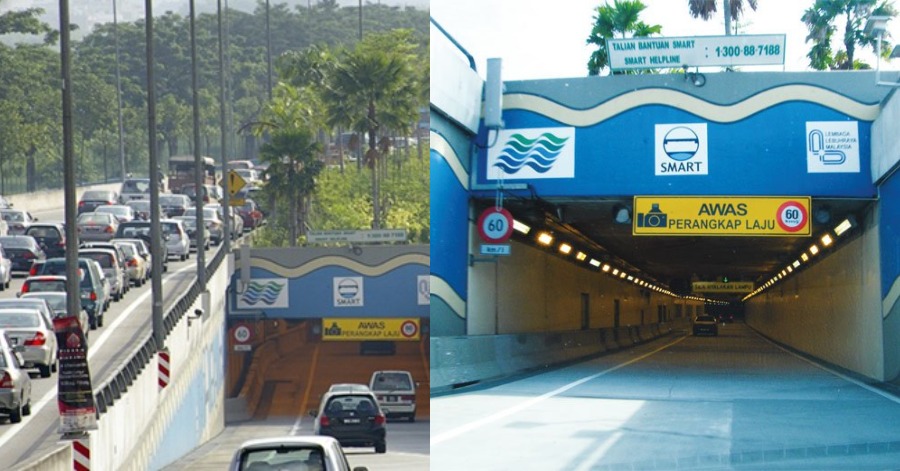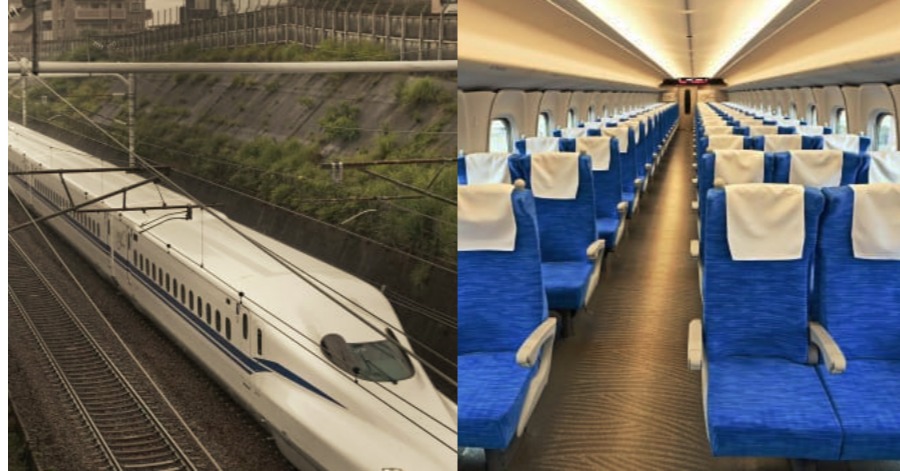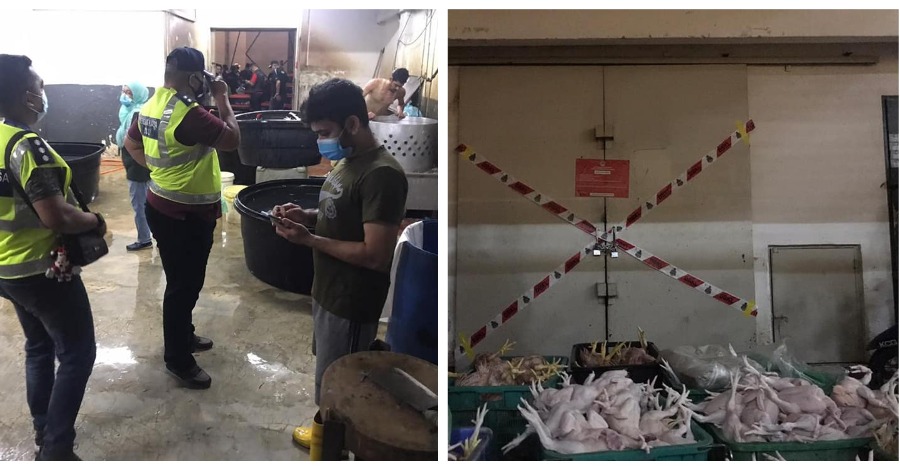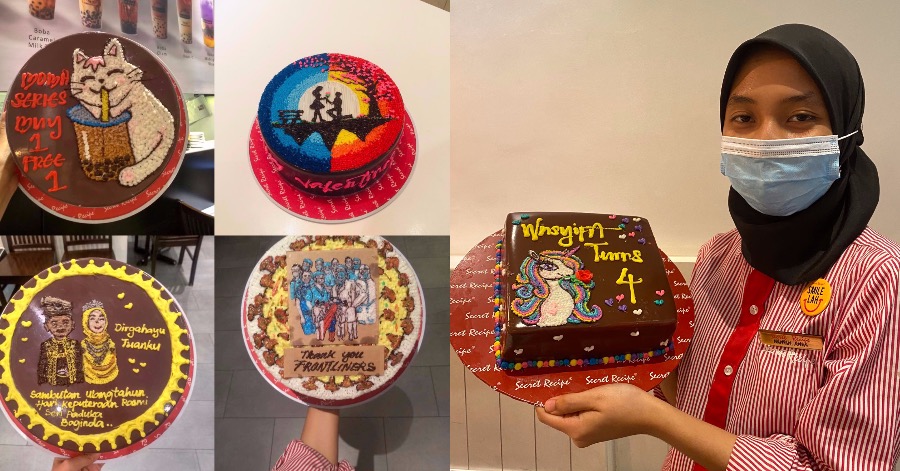SMART tunnel or the Stormwater Management And Road Tunnel were built starting from November 2003 until the construction completed in 2007. The tunnel was built to help in improving the drainage system in Kuala Lumpur.
Kuala Lumpur, being the country’s capital is crowded with skyscrapers and buildings which proved its success in economy and modernization. However, Kuala Lumpur will have to face flash floods every time there were heavy rains. This situation creates problems for the city’s residents as it will disturb their activities.
Due to this, the authorities took a preventive step by coming up with the SMART tunnel idea. The SMART tunnel is the first tunnel of its kind in the world. The storm drainage and road structure are one of the main roads used by Kuala Lumpur residents.
Recently, on 10 September, a flash flood hits the city again. It also struck major parts of the city after a torrential downpour on that day. Many people started to question the effectiveness of the SMART tunnel as it seemed not to give any improvement in handling the flash flood. Here is a thread made by @SkyscrapersMY on how the tunnel operates when handling flash floods in Kuala Lumpur.
The SMART tunnel, FIRST tunnel traffic & flood management IN THE WORLD.
This 9.7km tunnel has also been recognized by CNN as one of the Top 10 Tunnels in the World!
This thread will explain how it plays a role in resolving the floods that hit Kuala Lumpur.
SMART Tunnel, terowong trafik & pengurusan banjir yg PERTAMA DI DUNIA.
Terowong sepanjang 9.7km ini juga pernah diiktiraf oleh CNN sbagai antara 10 Terowong Terbaik di Dunia!
Thread ini akan menerangkan bagaimana ia berperanan utk menyelesaikan banjir yg melanda di Kuala Lumpur pic.twitter.com/4EY2oYpCB9
— Skyscrapers MY (@SkyscrapersMY) September 14, 2020
Along with its name, Stormwater Management And Road Tunnel or SMART, it has two functions
1. For traffic routes
2. To REDIRECT floods from entering the city
Apart from that, it provides an alternative route for road users who frequently commute from south KL to the city center
Seiring dgn namanya, Stormwater Management And Road Tunnel atau SMART, fungsinya ada dua je
1. Untuk laluan trafik
2. Untuk MELENCONGKAN banjir dari masuk ke bandarayaSelain tu, ia memberi laluan alternatif kpd pengguna jln raya yg kerap ulang-alik dari selatan KL ke pusat bdr pic.twitter.com/R2Xn2jldTE
— Skyscrapers MY (@SkyscrapersMY) September 14, 2020
It operates in 4 modes:
Mode 1: When there is no flood, it is just a regular road tunnel.
Mode 2: When there is a flood, water flows to the bottom of the tunnel. The upper part is open as usual for traffic lanes.
Ia beroperasi dengan 4 mod:
Mod 1: Bila takde banjir, ia hanya terowong jalan biasa.
Mod 2: Bila berlaku banjir, air mengalir ke bahagian bawah terowong. Bahagian atas tetap dibuka mcm biasa utk laluan trafik. pic.twitter.com/bftzLDRNz1
— Skyscrapers MY (@SkyscrapersMY) September 14, 2020
Mode 3: Large flash floods occur, traffic routes are cleared & closed within an hour. Floodwaters flow below.
Mode 4: When flash floods continue, water also flows into the traffic lanes. It will only reopen after 48 hours.
Mod 3: Banjir kilat besar berlaku, laluan trafik dikosongkan & ditutup dlm masa sejam. Air banjir mengalir di bawah.
Mod 4: Bila banjir kilat berterusan, air turut dialirkan ke laluan trafik. Laluan trafik itu hanya akan dibuka semula selepas 48 jam. pic.twitter.com/UicBVI4bfz
— Skyscrapers MY (@SkyscrapersMY) September 14, 2020
When it rains heavily, the floodwater from the Klang River is diverted to the Berembang reservoir pond, Ampang.
Next, water was flowed through the SMART tunnel into the Taman Desa reservoir pond before being released into the Kerayong River.
This SMART is like a connecting pipe between 2 rivers
Bila hujan lebat, air banjir dari Sungai Klang dilencongkan ke kolam takungan Berembang, Ampang.
Next, air tadi dialirkan melalui terowong SMART ke kolam takungan Taman Desa sblm dilepaskan secara terkawal ke Sungai Kerayong.
SMART ini ibarat paip penghubung antara 2 sungai lah pic.twitter.com/wcTrCCSuC0
— Skyscrapers MY (@SkyscrapersMY) September 14, 2020
After the flooding is complete, the tunnel for the traffic route is only open after 48 hours to clean the dirt, mud, garbage & other things which were brought by the flood water before this.
Tunnels are cleaned through the “pressure washing” method.
Selepas pengaliran banjir selesai, terowong untuk laluan trafik hanya dibuka selepas 48 jam untuk membersihkan kekotoran, lumpur, sampah-sarap & segala mak nenek yg dibawa air banjir sebelum ni.
Terowong dibersihkan melalui kaedah “pressure washing”. pic.twitter.com/242dZIRieT
— Skyscrapers MY (@SkyscrapersMY) September 14, 2020
So, is the flood in Kuala Lumpur the other day (10 Sept 2020) due to the failure of the SMART system?
The answer is no.
According to hydrologist Chong Sun Fatt, SMART has done its best to prevent the Klang River from overflowing.
Jadi, adakah banjir di Kuala Lumpur tempoh hari (10 Sept 2020) adalah disebabkan kegagalan sistem SMART?
Jawapannya, tidak.
Menurut pakar hidrologi, Chong Sun Fatt, SMART telah pun melakukan yg terbaik bagi mengekang Sungai Klang dari melimpah. pic.twitter.com/SwzAA7aRCa
— Skyscrapers MY (@SkyscrapersMY) September 14, 2020
However, SMART cannot divert the excessive flow from Sungai Gombak & Sungai Batu because it can only divert flow from Sungai Ampang & Sungai Klang.
This causes the water level to rise in downtown KL as in the area of Masjid Jamek.
Namun, SMART tidak dpt melencongkan isipadu melampau aliran dari Sungai Gombak & Sungai Batu kerana ia hanya mampu melencongkan aliran dari Sungai Ampang & anak Sungai Klang.
Ini menyebabkan paras air meningkat di pusat bandar KL seperti di kawasan Masjid Jamek. pic.twitter.com/qXjX7sTwZY
— Skyscrapers MY (@SkyscrapersMY) September 14, 2020
In addition, floods are more difficult to alleviate in low-lying areas & old city centers such as Kuala Lumpur, as they require substantial capital expenditure and large-scale relocation operations.
Selain itu, banjir lebih sukar untuk disurutkan di kawasan rendah & pusat bandar lama seperti Kuala Lumpur, kerana ia memerlukan perbelanjaan modal yang besar dan operasi penempatan semula secara besar-besaran.
— Skyscrapers MY (@SkyscrapersMY) September 14, 2020
Technically and economically, we will not be able to cope with flash floods. It is too expensive and impractical to implement.
Each drainage system will only provide a certain level of protection. We cannot provide a flood-free drainage system.
Secara teknikal dan ekonomi, kita tidak akan dapat atasi banjir kilat. Ia terlalu mahal dan tidak praktikal untuk dilaksanakan.
Setiap sistem saliran hanya akan memberikan tahap perlindungan tertentu. Kita tidak boleh sediakan sistem saliran bebas banjir.
— Skyscrapers MY (@SkyscrapersMY) September 14, 2020
According to Prof Alias Abdullah from UIA, although the flash floods require the authorities to review their emergency drainage SOP, the public also plays an important role in preventing the floods from continuing.
Menurut Prof Alias Abdullah dari UIA pula, walaupun banjir kilat itu memerlukan pihak berwajib mengkaji semula SOP saliran kecemasan mereka, orang awam juga memainkan peranan penting untuk mencegah banjir dari terus berlarutan.
— Skyscrapers MY (@SkyscrapersMY) September 14, 2020
Disposing of garbage into drains, as well as logging & development activities, also has a detrimental effect on the city’s water drainage system.
Membuang sampah ke dalam longkang, serta aktiviti2 pembalakan & pembangunan, turut memberi kesan yg buruk kepada sistem saliran air di bandar. pic.twitter.com/3oEVsdtmYa
— Skyscrapers MY (@SkyscrapersMY) September 14, 2020
SMART tunnels can be built as much as possible, but they are only temporary steps. All parties must be tolerant and work together in resolving the flash flood crisis in our beloved city of Kuala Lumpur ♥ ️🇲🇾
Terowong SMART boleh dibina sebanyak yg mungkin, tetapi ia hanya langkah sementara. Semua pihak harus bertoleransi dan berganding bahu dalam menyelesaikan kemelut banjir kilat di bandaraya Kuala Lumpur kita yg tercinta ini ♥️🇲🇾 pic.twitter.com/Ccpg3YqlhF
— Skyscrapers MY (@SkyscrapersMY) September 14, 2020
Source: Twitter









Leave a Comment